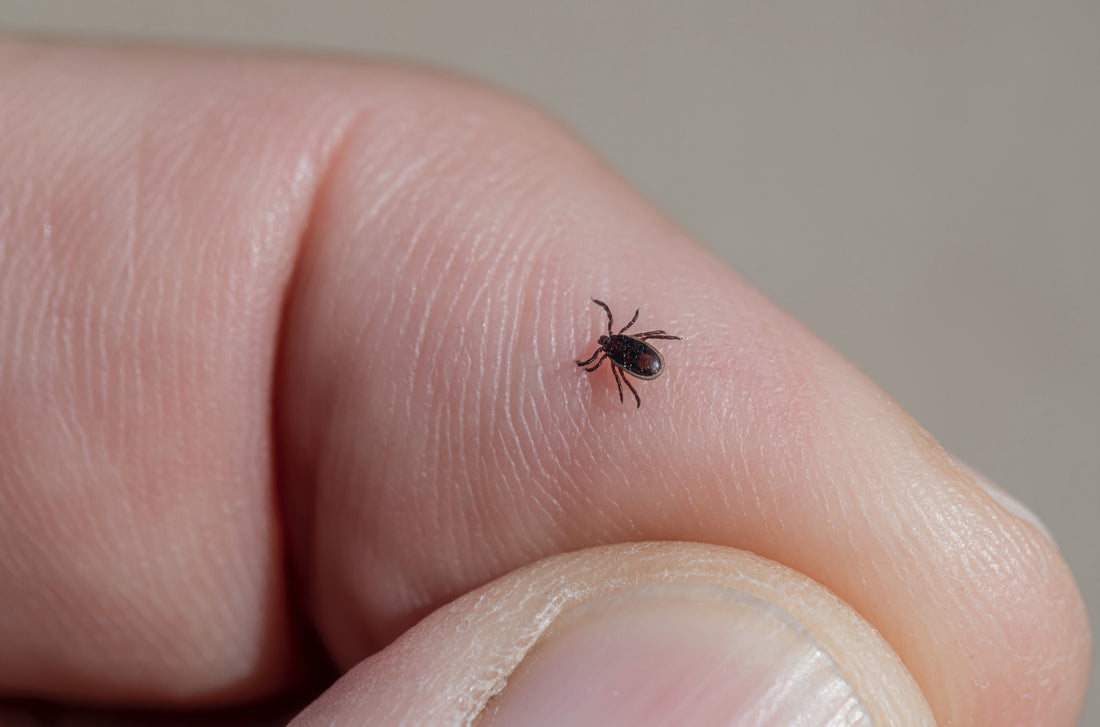While some years may seem better than others, there is no denying that the tick population has exploded in the last decade, becoming a serious and increasing threat to dogs, humans, and even wildlife.
Although Lyme is currently the most prevalent tick-borne disease, according to the CDC, there has been a significant increase in cases of Babesiosis, a disease spread by ticks that is considered to be “worse than Lyme”.
Dangers of Untreated Tick-borne Diseases
If diagnosed promptly, Lyme disease can be effectively treated with a course of antibiotics, and your dog’s prognosis will be good. But if left untreated, the disease can result in very serious health complications, including serious neurological and cardiac issues, kidney failure, and even death.
How to Protect Your Dog from Ticks
Tick-borne diseases are nothing to take lightly, which is why being proactive in preventing them is so important.
Avoid High-Tick Areas
The most effective way to avoid ticks is actually the easiest! Avoid areas where ticks are prevalent! This includes, fields, tall grass, and especially wooded areas.
Keep ticks out of your yard by keeping your grass cut short, and by removing leaves and debris where ticks love to hang out!

Preventative Treatments
According to veterinarians and pet experts, giving a once a month, topical “spot on” treatment is very effective at killing ticks. Other options include tick collars, and oral tick medications.
Vaccinate For Lyme
If you have a 5 lb. chihuahua that goes out a couple times a day in a manicured yard, vaccinating for Lyme is probably not necessary. But if your lifestyle includes outdoor activities with your dog, and especially if you live in a high-risk area, vaccinating against Lyme disease is a no brainer.
Visual Tick Checks
Perform a thorough visual tick check immediately after being anywhere ticks are prevalent.
While ticks prefer to bite higher up on a dog’s body, they “hop on” wherever they can, as the dog passes by. So, checking their belly area, lower legs, tail, feet (including between toes) is important. And if your dog is a “sniffer”, make sure to thoroughly check their head, face, muzzle and ears.
Tick Check Tips
While doing a visual inspection, give your dog a quick grooming. Brushing their coat will likely catch ticks before they have a chance to burrow into the hair, and before they are transported into your house!

Another suggestion is to use a pet hair/lint roller. Ticks will stick to it, and you can simply throw them away before they even have a chance to attach to your dog.
Physical Tick Checks
No matter how vigilant you are, you will never prevent 100% of ticks. Deer ticks in particular are tiny, and a deer tick nymph is even tinier! So, in addition to visual checks after outdoor time, it’s a good idea to do a “physical” check every few days. Just use your fingertips to feel under their coat for any small bumps. Remember, ticks are almost always higher up on the body, so focus on the chest, neck, upper back, head, and face.
Although the chances of your dog contracting Lyme is significantly reduced when proper preventative measures are taken, there is still a small risk.
How to Properly Remove a Tick
If you find a tick on your dog that is embedded, you need to remove it right away. Ticks can transmit disease in as little as 24 - 36 hours, so removing them immediately is extremely important.
Using tweezers or a tick removal tool, grasp the tick as close to the skin as possible, and using steady pressure, slowly pull in a straight upwards direction until the tick come out. Treat the area thoroughly with an antimicrobial.

Check to make sure you removed the entire tick. If you suspect the head may still be embedded, keep a close eye on the area for 2-3 weeks, and consult your veterinarian for advice if you see any signs of redness or swelling.
Save Any Ticks You Remove
Yup! After you remove the tick, put it in a jar or zip lock bag, write the date on it, and hang onto it. This way, if your dog does exhibit any symptoms, the tick can be tested for harmful bacteria, thus providing your vet with the info they need for proper treatment.
Symptoms of Lyme in Dogs
Although the chances of your dog contracting Lyme is significantly reduced when proper preventative measures are taken, there is still a risk, and knowing the symptoms can be critical.
- Limping and lameness (may be intermittent and move to different limbs)
- Discomfort, stiffness and joint pain
- Fever
- Lethargy and low energy
- Loss of appetite and weight loss
Be Proactive!
Once diagnosed, and if caught quickly enough, Lyme can be effectively treated with a course of antibiotics. But if left untreated, the disease can result in serious and debilitating health issues that may be fatal.
If your dog has been exposed to ticks and is exhibiting signs of infection, it is crucial to seek medical care quickly.
The sooner treatment is sought, the better chance your dog will have of recovering from acute Lyme disease, an important step in avoiding future health issues.
IMPORTANT UPDATE: Due to warmer winters, veterinarians and pet experts now recommend keeping your dog on a tick prevention year-round.
Related: Prepare for Ticks on Dogs and Cats
Products related to this article:
Every Sale Supports a Shelter Pet. Learn More.
Created in Vermont. Learn More.
If you suspect your pet is sick, call your vet immediately. For health-related questions, always consult your veterinarian, as they have examined your pet, know the pet's health history, and can make the best recommendations for your pet.




